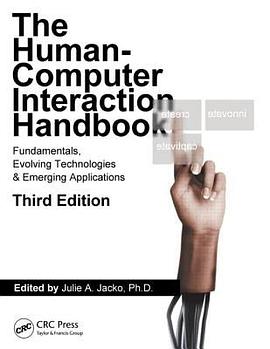Human Computer Interaction Handbook 豆瓣
作者:
Jacko, Julie A.
The third edition of a groundbreaking reference, The Human-Computer Interaction Handbook: Fundamentals, Evolving Technologies, and Emerging Applications raises the bar for handbooks in this field. It is the largest, most complete compilation of HCI theories, principles, advances, case studies, and more that exist within a single volume. The book captures the current and emerging sub-disciplines within HCI related to research, development, and practice that continue to advance at an astonishing rate. It features cutting-edge advances to the scientific knowledge base as well as visionary perspectives and developments that fundamentally transform the way in which researchers and practitioners view the discipline. New and Expanded Topics in the Third Edition: HCI and global sustainability HCI in health care Social networks and social media Enterprise social computing Role of HCI in e-Government Role of creativity and cognition in HCI Naturalistic approach to evaluation, persuasion, and globalization The chapter authors include experts from academia, industry, and government agencies from across the globe - all among the very best and most respected in their fields. The more than 80 tables, 400 figures, nearly 7,000 references, and four-page color insert combine to provide the single most comprehensive depiction of this field. Broad in scope, the book pays equal attention to the human side, the computer side, and the interaction of the two. This balanced, application-focused design coverage makes the book not only an excellent research guide but also an authoritative handbook for the practice of HCI and for education and training in HCI.

